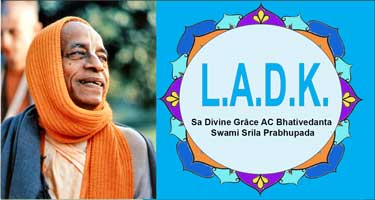SRIMAD-BHAGAVATAM 8 CHAPTER 16 TEXT 60

ayaṁ vai sarva-yajnākhyaḥ
sarva-vratam iti smṛtam
tapaḥ-sāram idaṁ bhadre
dānaṁ ceśvara-tarpaṇam
TRANSLATION
This payo-vrata is also known as sarva-yajna. In other words, by performing this sacrifice one can perform all other sacrifices automatically. This is also acknowledged to be the best of all ritualistic ceremonies. O gentle lady, it is the essence of all austerities, and it is the process of giving charity and pleasing the supreme controller.
PURPORT
Ārādhanānāṁ sarveṣāṁ viṣṇor ārādhanaṁ param. This is a statement made by Lord Śiva to Pārvatī. Worshiping Lord Viṣṇu is the supreme process of worship. And how Lord Viṣṇu is worshiped in this payo-vrata ceremony has now been fully described. The ultimate goal of life is to please Lord Viṣṇu by varṇāśrama-dharma. The Vedic principles of four varṇas and four āśramas are meant for worship of Viṣṇu (viṣṇur ārādhyate puṁsāṁ nānyat tat-toṣa-kāraṇam). The Kṛṣṇa consciousness movement is also viṣṇu-ārādhanam, or worship of Lord Viṣṇu, according to the age. The payo-vrata method of viṣṇu-ārādhanam was enunciated long, long ago by Kaśyapa Muni to his wife, Aditi, in the heavenly planets, and the same process is bona fide on earth even now. Especially for this age of Kali, the process accepted by the Kṛṣṇa consciousness movement is to open hundreds and thousands of Viṣṇu temples (temples of Rādhā-Kṛṣṇa, Jagannātha, Balarāma, Sītā-Rāma, Gaura-Nitāi and so on). Performing prescribed worship in such temples of Viṣṇu and thus worshiping the Lord is as good as performing the payo-vrata ceremony recommended here. The payo-vrata ceremony is performed from the first to the thirteenth day of the bright fortnight of the moon, but in our Kṛṣṇa consciousness movement Lord Viṣṇu is worshiped in every temple according to a schedule of twenty-four hours of engagement in performing kīrtana, chanting the Hare Kṛṣṇa mahā-mantra, offering palatable food to Lord Viṣṇu and distributing this food to Vaiṣṇavas and others. These are authorized activities, and if the members of the Kṛṣṇa consciousness movement stick to these principles, they will achieve the same result one gains by observing the payo-vrata ceremony. Thus the essence of all auspicious activities, such as performing yajna, giving in charity, observing vratas, and undergoing austerities, is included in the Kṛṣṇa consciousness movement. The members of this movement should immediately and sincerely follow the processes already recommended. Of course, sacrifice is meant to please Lord Viṣṇu. Yajnaiḥ saṅkīrtana-prāyair yajanti hi sumedhasaḥ: [SB 11.5.32] in Kali-yuga, those who are intelligent perform the saṅkīrtana-yajna. One should follow this process conscientiously.

